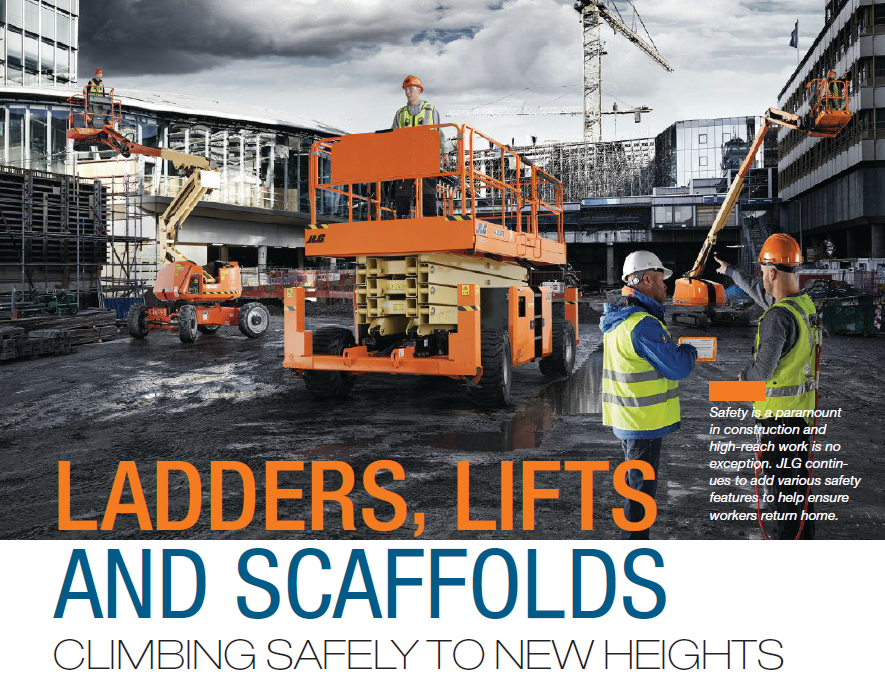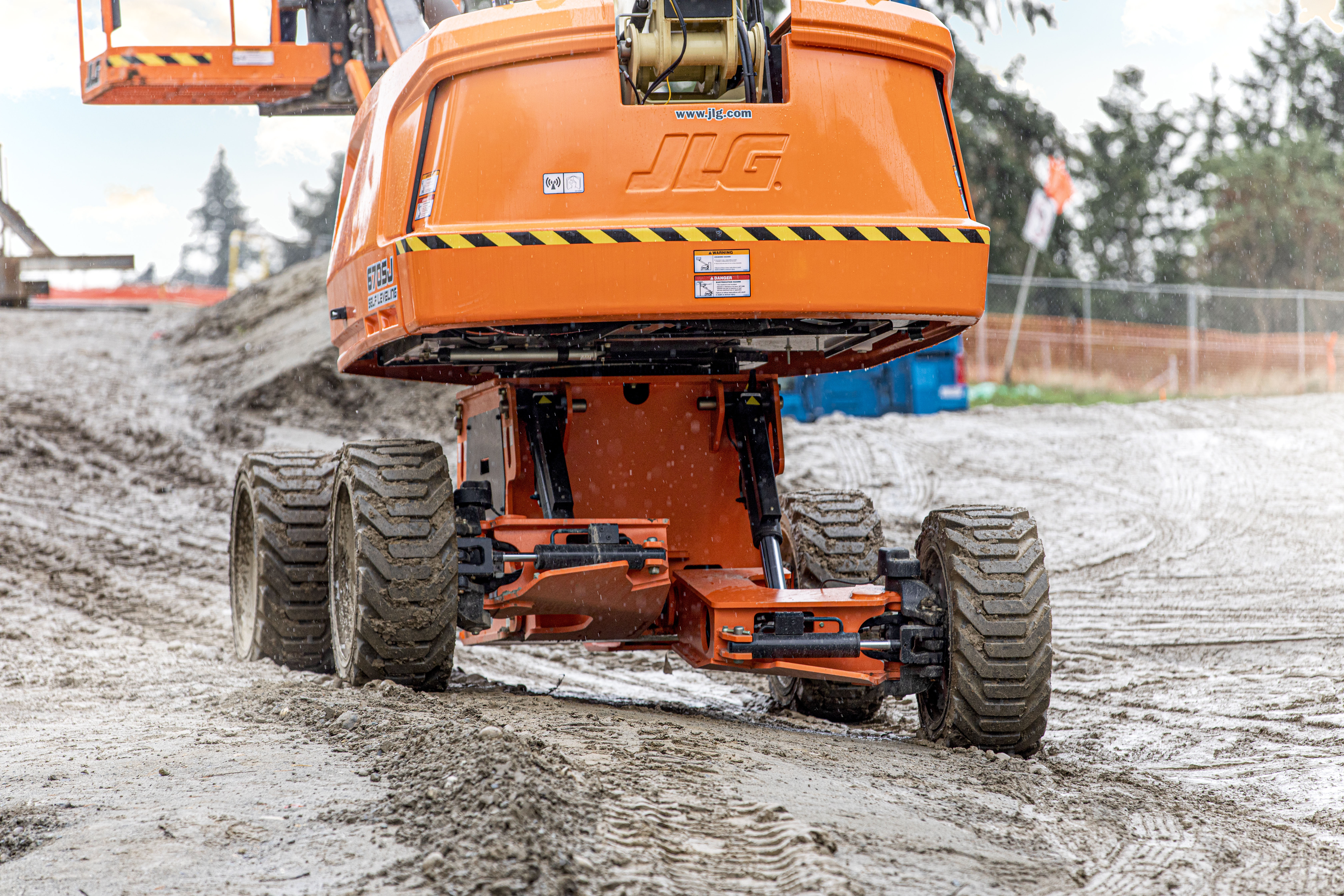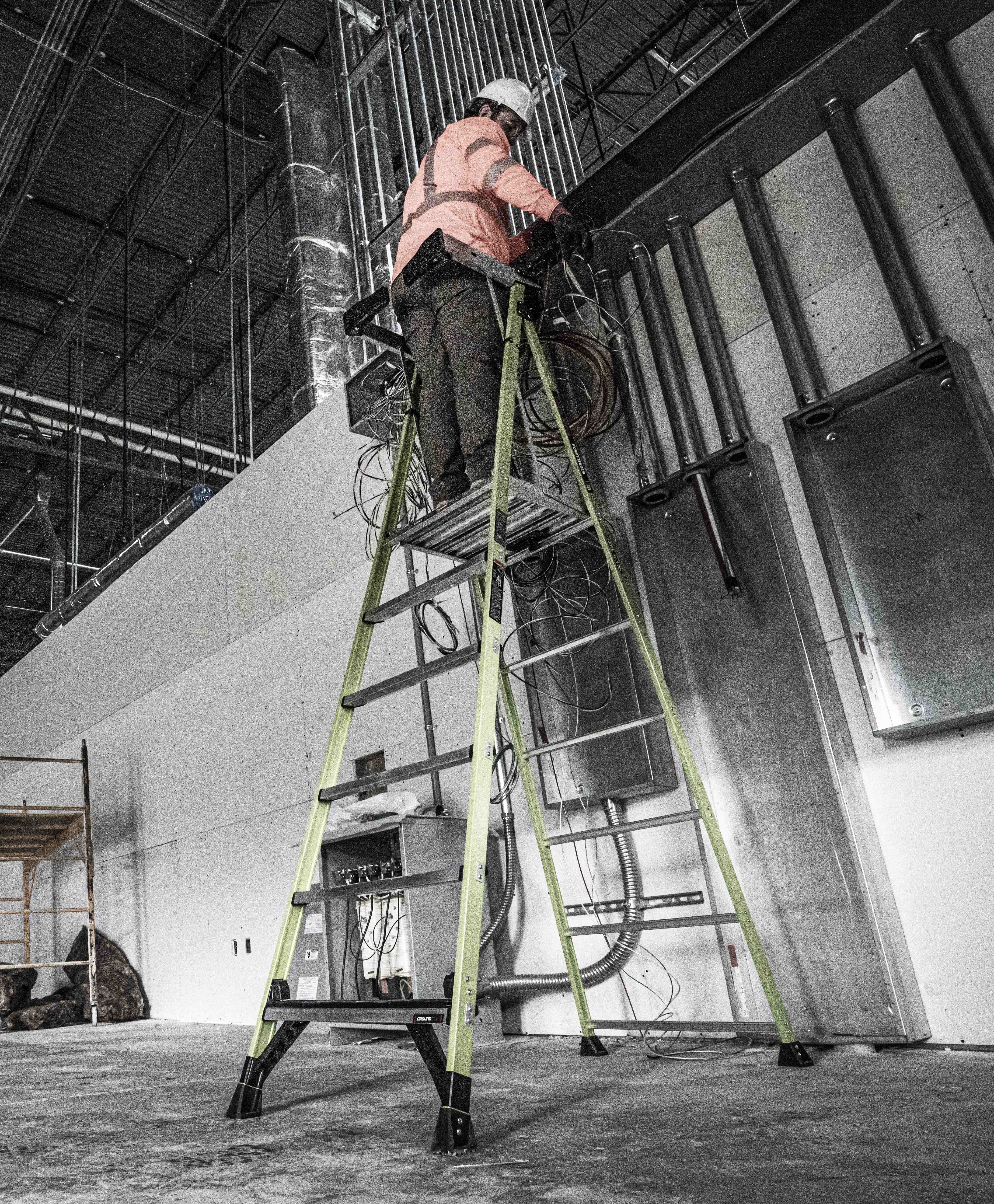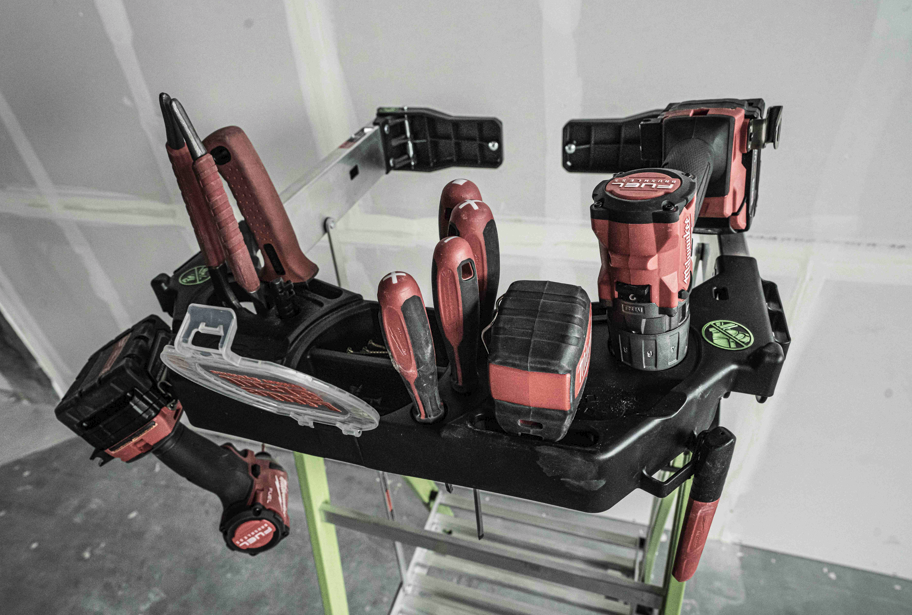 |
While proper ladder, lift, or scaffold usage may seem like common sense, according to the Occupational Safety and Health Administration (OSHA) falls from ladders are still the No. 1 cause of death in the construction industry. Fortunately, most of these falls are preventable. Manufacturers in this sector are keenly aware of the safety issues of high-reach work and are constantly seeking to implement new innovations to ensure the safety of users.
JLG
With a handful of large market tailwinds expected to keep the industry busy for years to come, JLG is anticipating its customers to start making conscious decisions about what they will purchase and who they partner with in 2025.
“Everyone’s waiting for the next shoe to drop,” says Tim Morris, chief commercial officer at JLG. “Right now, there’s so much discussion around the economy. We work with all our customers and check in with them constantly. It’ll be an interesting year, but we’re looking forward to it.”
According to Rogerio dos Santos, vice president of strategy and product management at JLG, many of the trends in what customers are requesting are similar from year to year. For 2024 and leading into 2025, these currently include the following:
Higher capacities: Customers seek MEWPs that can lift heavier loads. This trend is driven by the need to increase productivity by moving more materials or supporting more workers on a single platform. Higher capacity MEWPs allow for fewer trips and more efficient use of time and resources on job sites.
Compact sizes: There’s a growing demand for smaller, more maneuverable MEWPs operating in confined spaces. This is particularly important in urban construction, renovation projects and industrial settings where space is at a premium. Compact MEWPs offer greater accessibility and versatility in tight work areas.
Versatility: Multi-purpose MEWPs are becoming increasingly popular. Customers prefer machines that can perform various tasks, reducing the need for multiple pieces of specialized equipment. Such versatility can lead to cost savings, improved efficiency, and simplified fleet management.
Environmentally friendly operation: With growing environmental concerns and stricter regulations, there’s a shift towards MEWPs with low or zero emissions, reduced noise levels and minimal fluid leakage. These eco-friendly features allow operation in sensitive areas like hospitals, schools and indoor spaces, as well as in jurisdictions with strict environmental regulations.
Connectivity: MEWPs are increasingly being integrated into the broader construction ecosystem through IoT (Internet of Things) technologies. This connectivity enables real-time monitoring of machine performance, predictive maintenance, fleet management, and data-driven decision-making. It can also enhance safety by providing remote diagnostics and operation oversight.
Autonomous operation: There’s growing interest in MEWPs with autonomous or semi-autonomous capabilities. These features can improve safety by reducing human error, addressing labor shortages by allowing one operator to manage multiple machines and increase efficiency by optimizing movement and positioning. Autonomous functions can range from simple self-leveling to complex navigation and task execution.
 |
Despite such advances, issues such as falls from height, electrocution, entrapments and tools falling from platforms continue to pose significant risks to contractors. Dos Santos says that addressing these concerns through continued innovation and rigorous safety protocols remains a priority to protect workers further and improve job site safety.
A major focus for JLG has been on integrating advanced technology to improve safety and efficiency, such as reducing the need for operators to be physically involved in high-risk tasks by leveraging robotics and autonomy and mobile control.
“This shift makes strenuous work less taxing and significantly enhances safety by minimizing direct exposure to hazards,” he says.
Advances such as a self-leveling chassis and variable tilt help stabilize lifts and allow operators to maintain a safe working position on uneven surfaces. In addition, SkySense provides an added level of awareness of the surroundings.
The company has also taken significant steps to develop and expand its product lines with the acquisition of Hinowa and AUSA, in hopes of offering new models and specialty machines that are beyond what JLG has traditionally offered. JLG also continues to update its own core product offering, as shown with the spring 2024 introduction of the refreshed SkyTrack 8042 telehandler model.
“We have expanded our range of electric equipment to include the all-new E313 telehandler and ES4046 scissor lift models,” he says. New features, accessories and options, such as AC drive motors, mid-rail decks, lithium battery packs and onboard generators have also been added to help customers work more productively in specific applications.
“Overall, integrating these advanced technologies will not only make current construction tasks safer but also have the potential to attract a more diverse workforce by making the industry more accessible and less physically demanding,” dos Santos says.
 |
| Falls remain the number one cause of death in the construction industry. Little Giant is continuing to innovate safety features on its products to reduce those numbers. |
LITTLE GIANT LADDER SYSTEMS
Safety trends are expected to continue to be prevalent in 2025 across the numerous commercial industries served by Little Giant Ladder Systems.
“For both our commercial and consumer product lines, safety and innovation have been at the forefront of everything we do at Little Giant Ladders,” says Katie Jancsura, senior director of marketing at Little Giant.
She notes that many companies throughout the trades have begun implementing programs to limit the use of portable ladders on the job, turning more toward scaffolding and lifts in hopes of preventing falls. Others have switched from the more traditional A-frame ladders to platform ladders for more stability.
 |
Ladder violations consistently rank in the top five most often cited by OSHA, along with fall protection and fall protection training. According to Jancsura, in 2020, there were more than 22,000 workplace injuries from ladders alone. An earlier study showed that 81% of construction fall injuries treated in emergency departments involved a ladder. Additionally, a 2007 study showed that more than 97% of ladder accidents over the course of a 15-year period occurred in non-occupational settings and a recent study noted a higher risk for adults 66 years and older.
“Employers and end users continue to recognize these trends and are prioritizing safety above all else, in-line with our own core values,” Jancsura says. “The ladder industry has a responsibility to continue to develop products that improve safety for its customers, whether on the jobsite or at home.”
As an example, Little Giant’s Hyperlight ladders are lightweight to help prevent strains and sprains. Jancsura notes that the company’s proprietary Ground Cue makes a sound to help prevent step off early accidents, the Sumo outrigger widens the ladder base to provide leveling and cage ladders provide guard rails for added stability.
“We’re not done yet,” she says. “Our team is continuing to prioritize safety through innovation, and we have some exciting new developments in the pipeline.”
In addition to a continued commitment to innovation in safety throughout its product lineup, Little Giant is still committed to providing resources for professionals and weekend warriors alike.
Jancsura notes that one of the leading causes of ladder fall injuries is due to a lack of ladder safety tools and information.
“Our Little Giant Live series which lives on our website and on YouTube allows us to share educational resources and we are collaborating with retailers to improve access to resources that will help people find the right products,” she says.
LEARN MORE
This article originally appeared in the December 2024/January 2025 issue of Contractor Supply magazine. Copyright, 2024/2025 Direct Business Media.
















